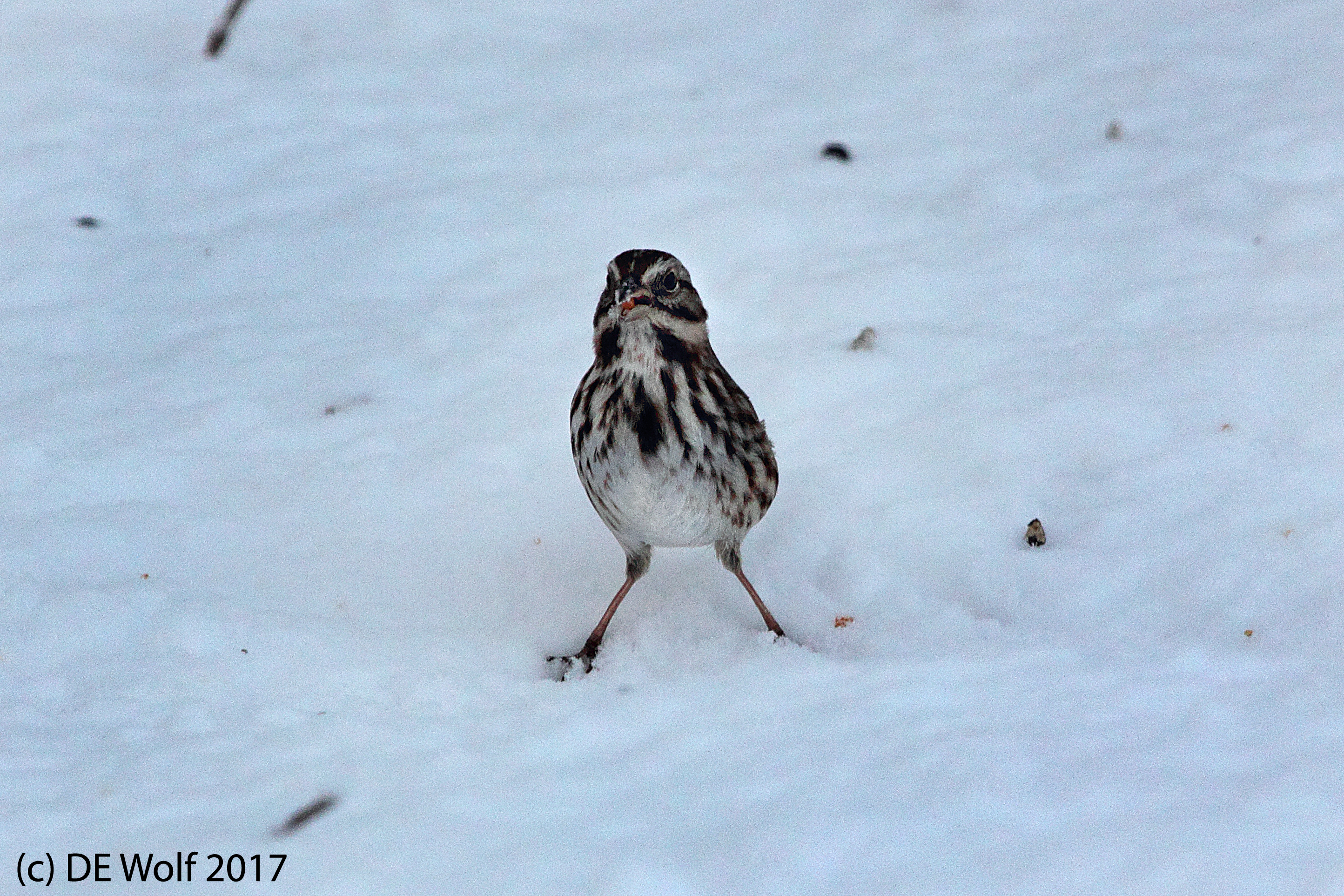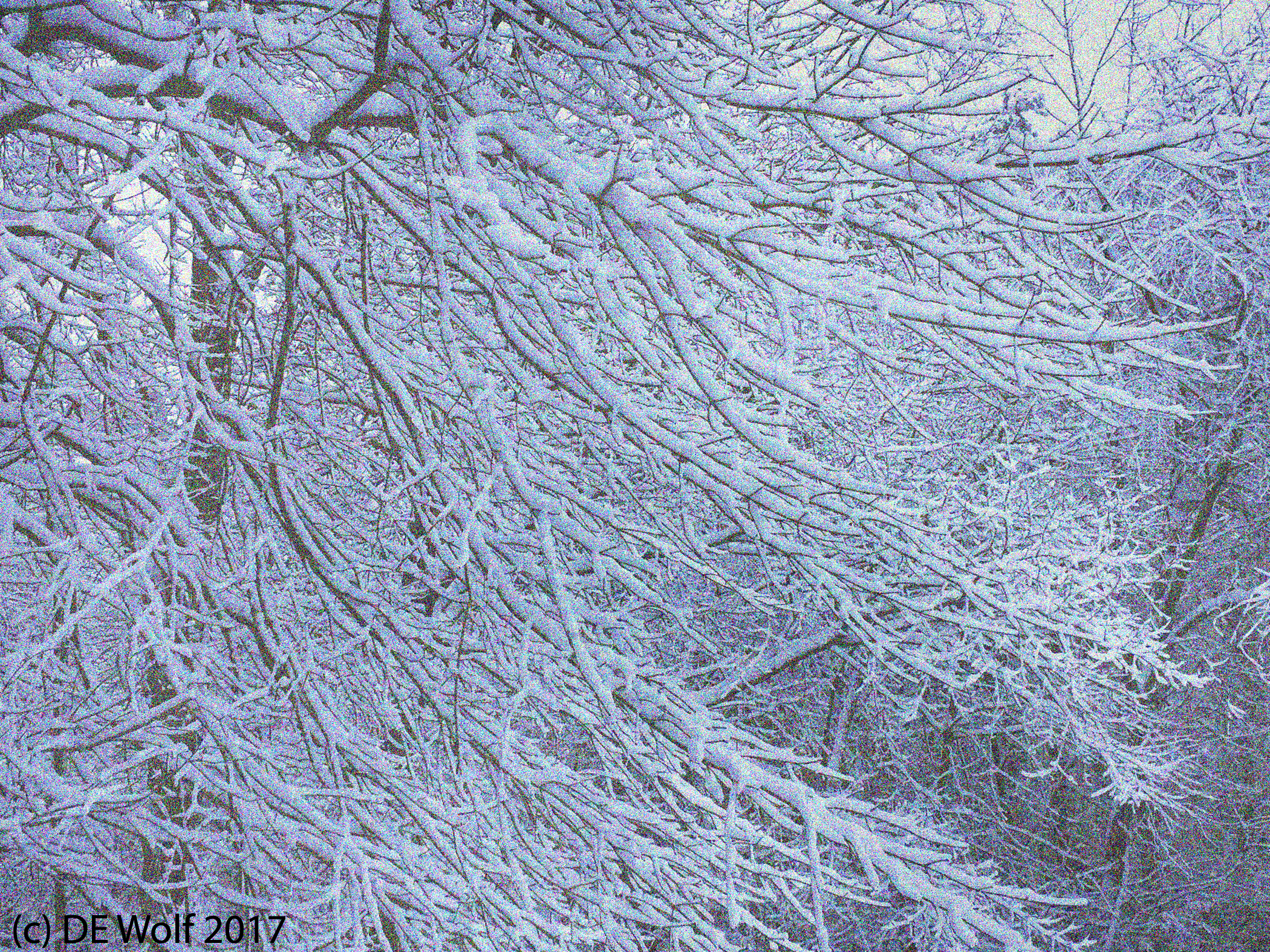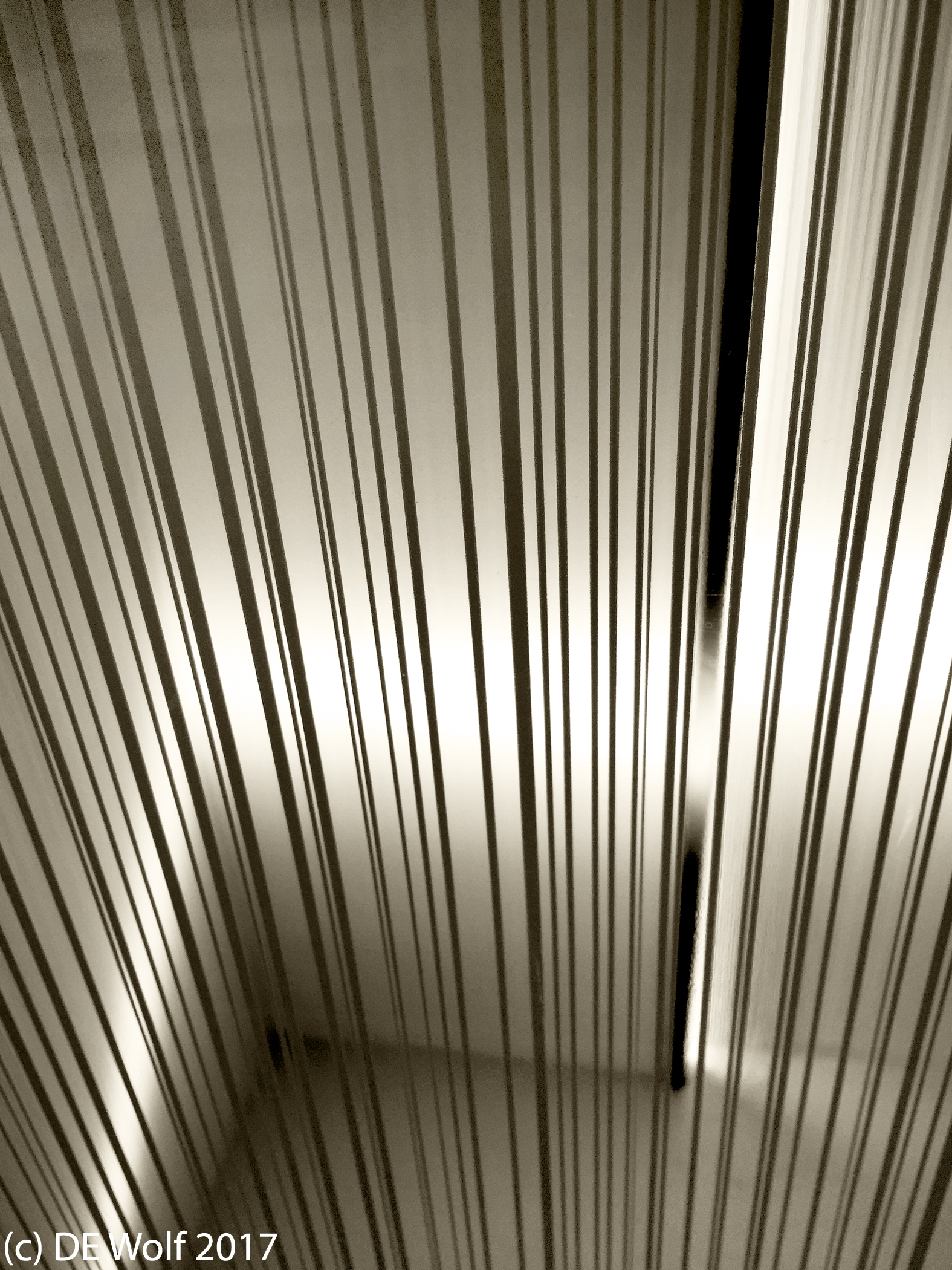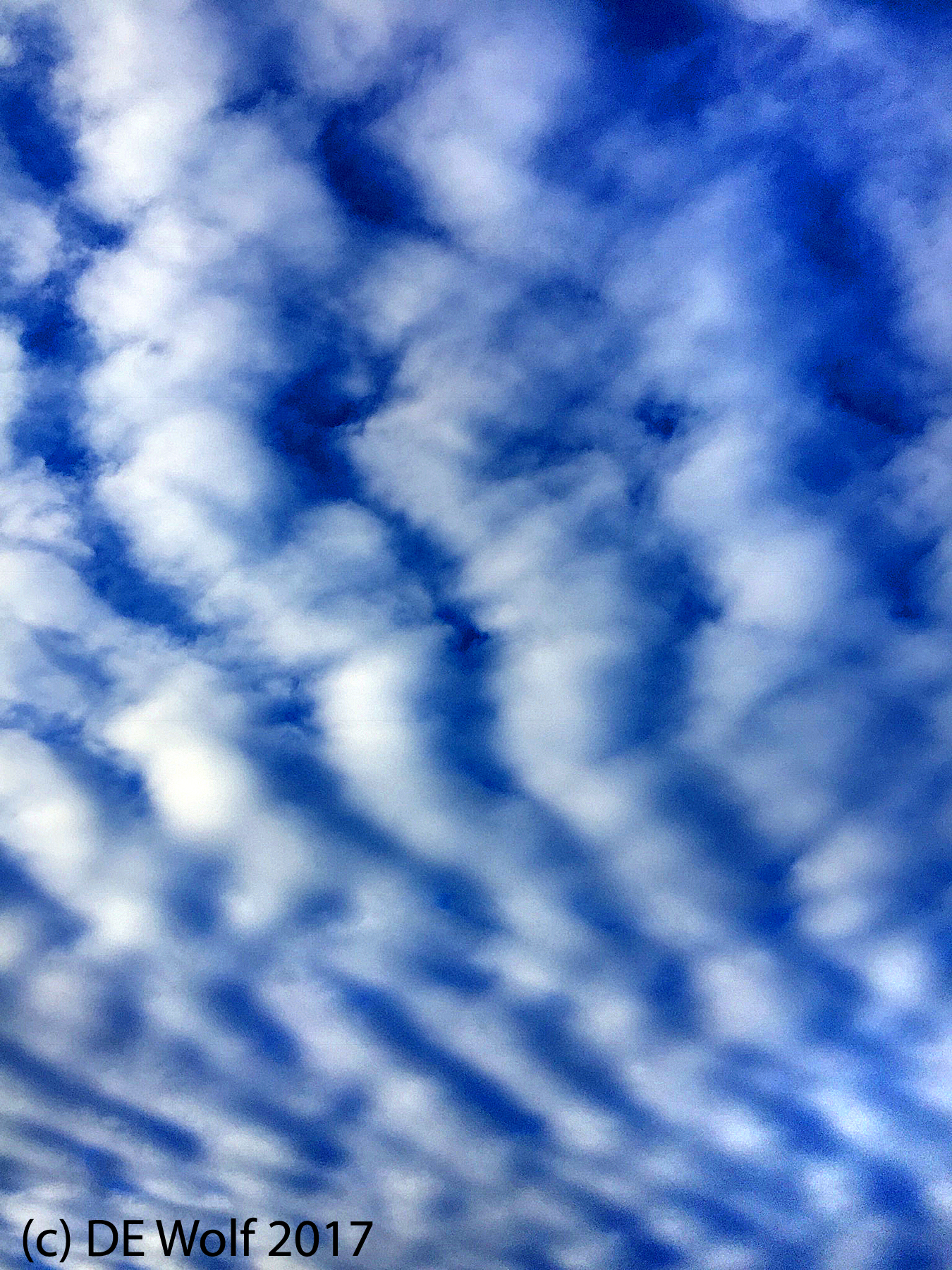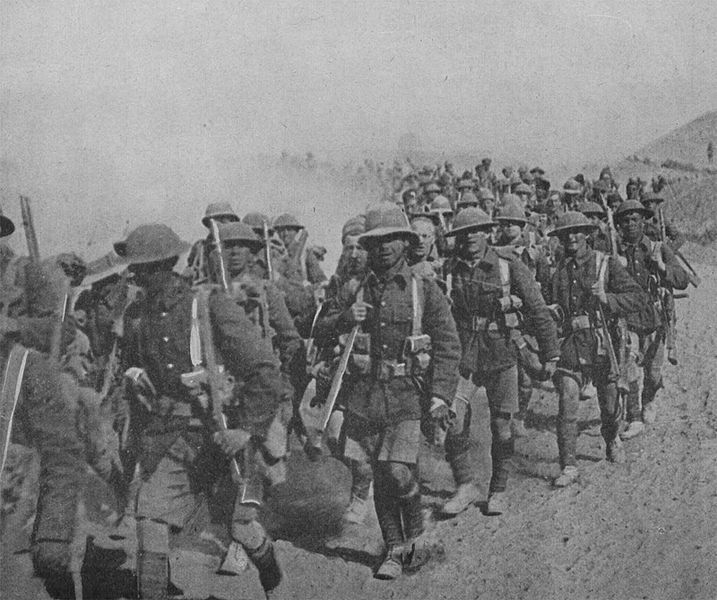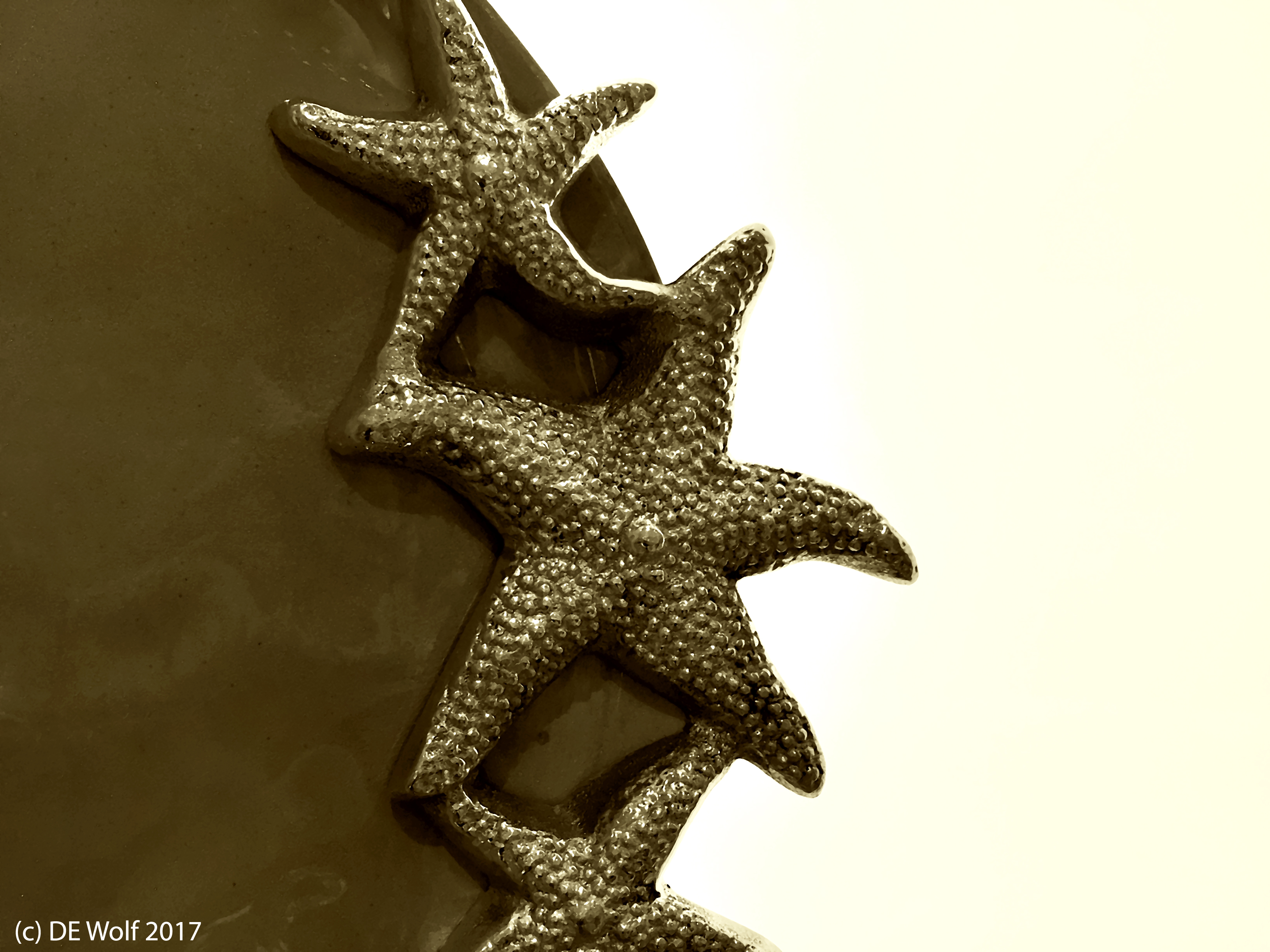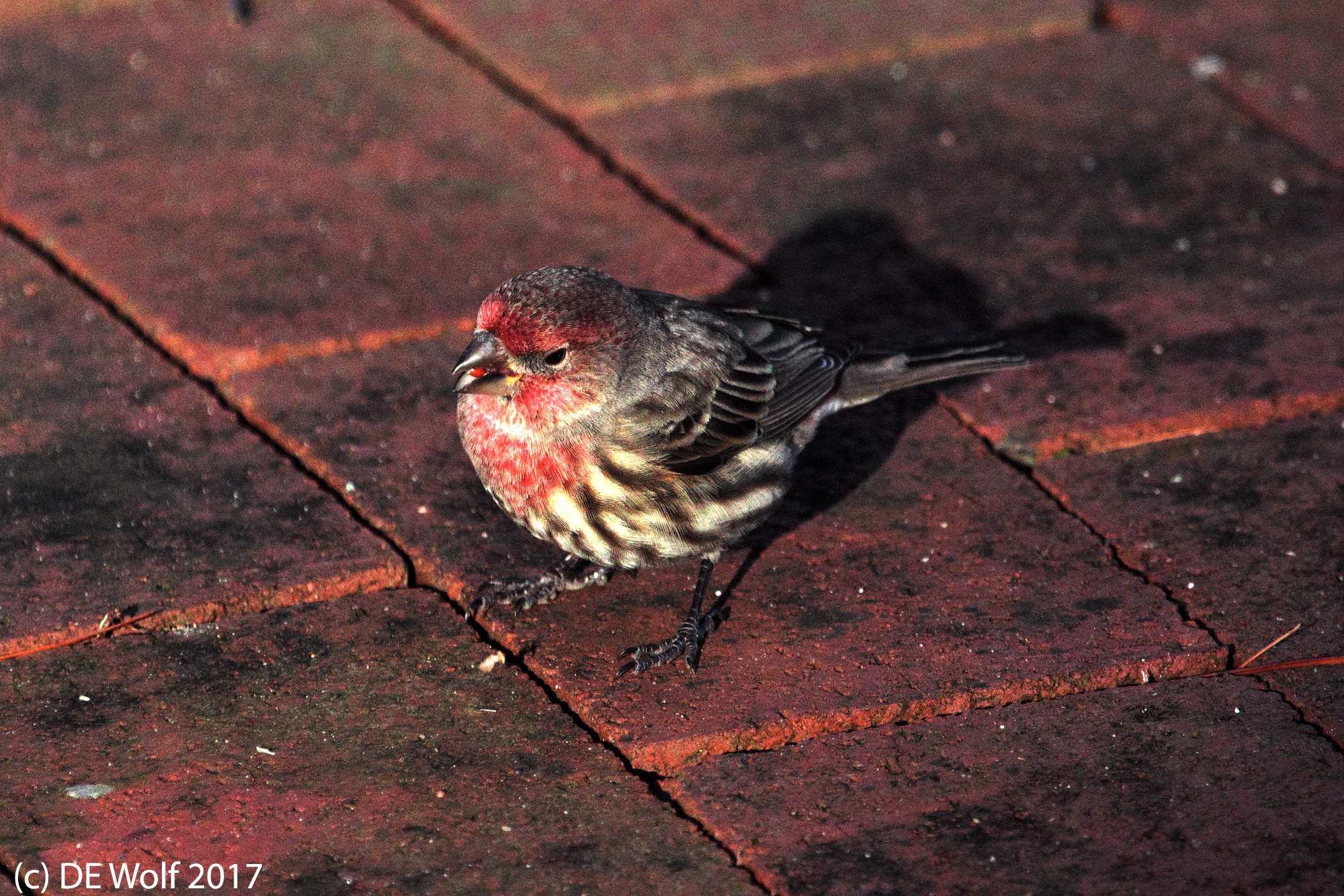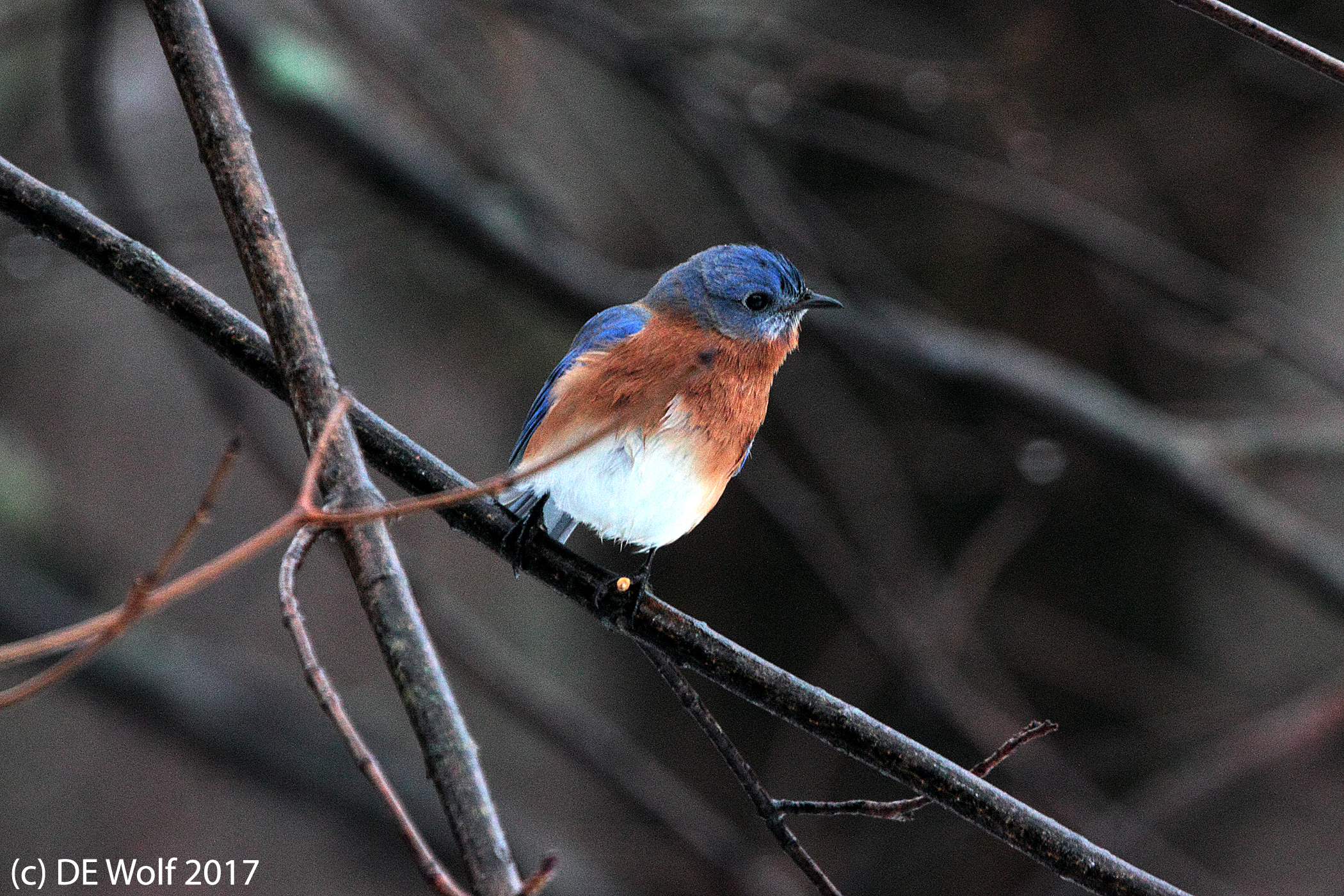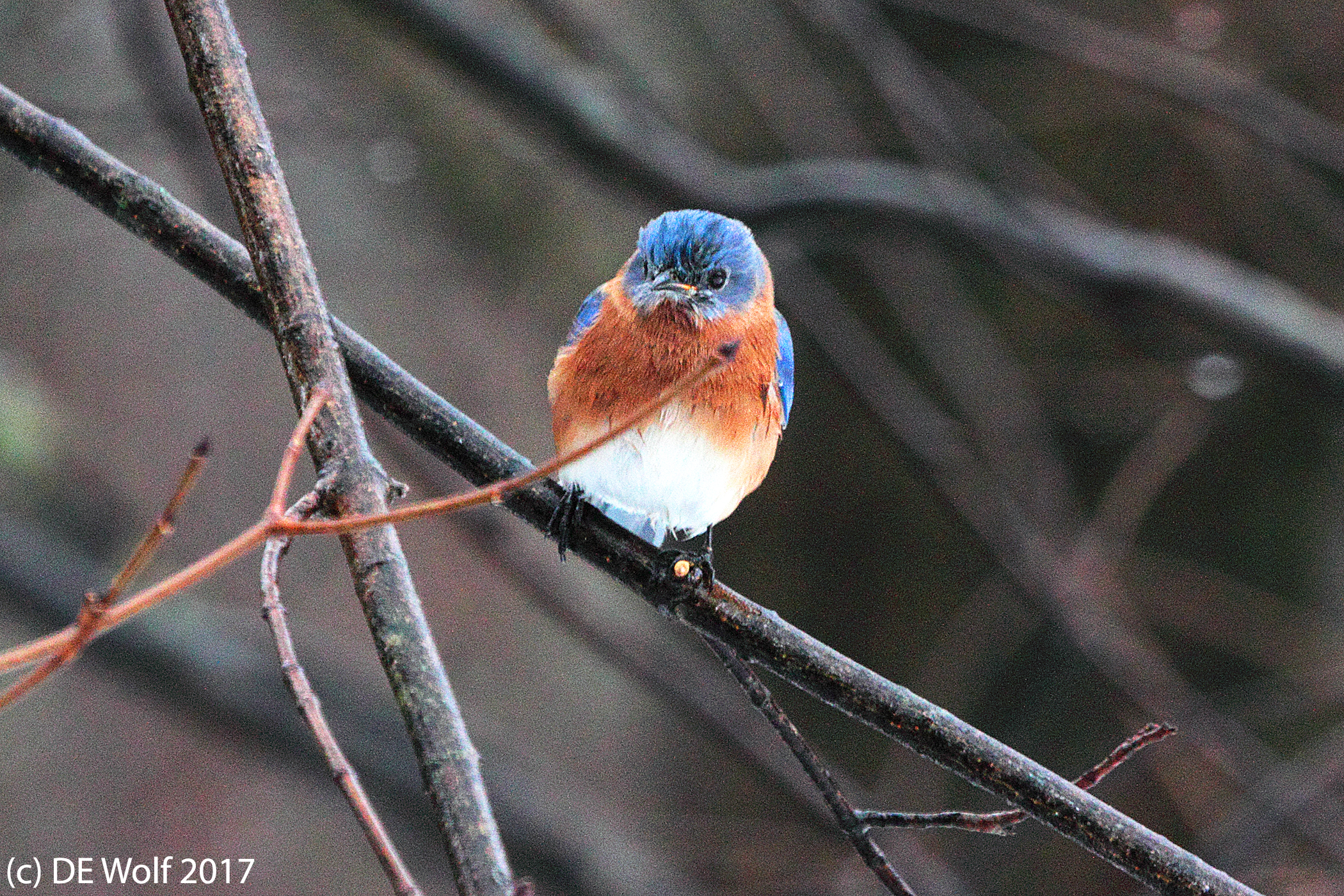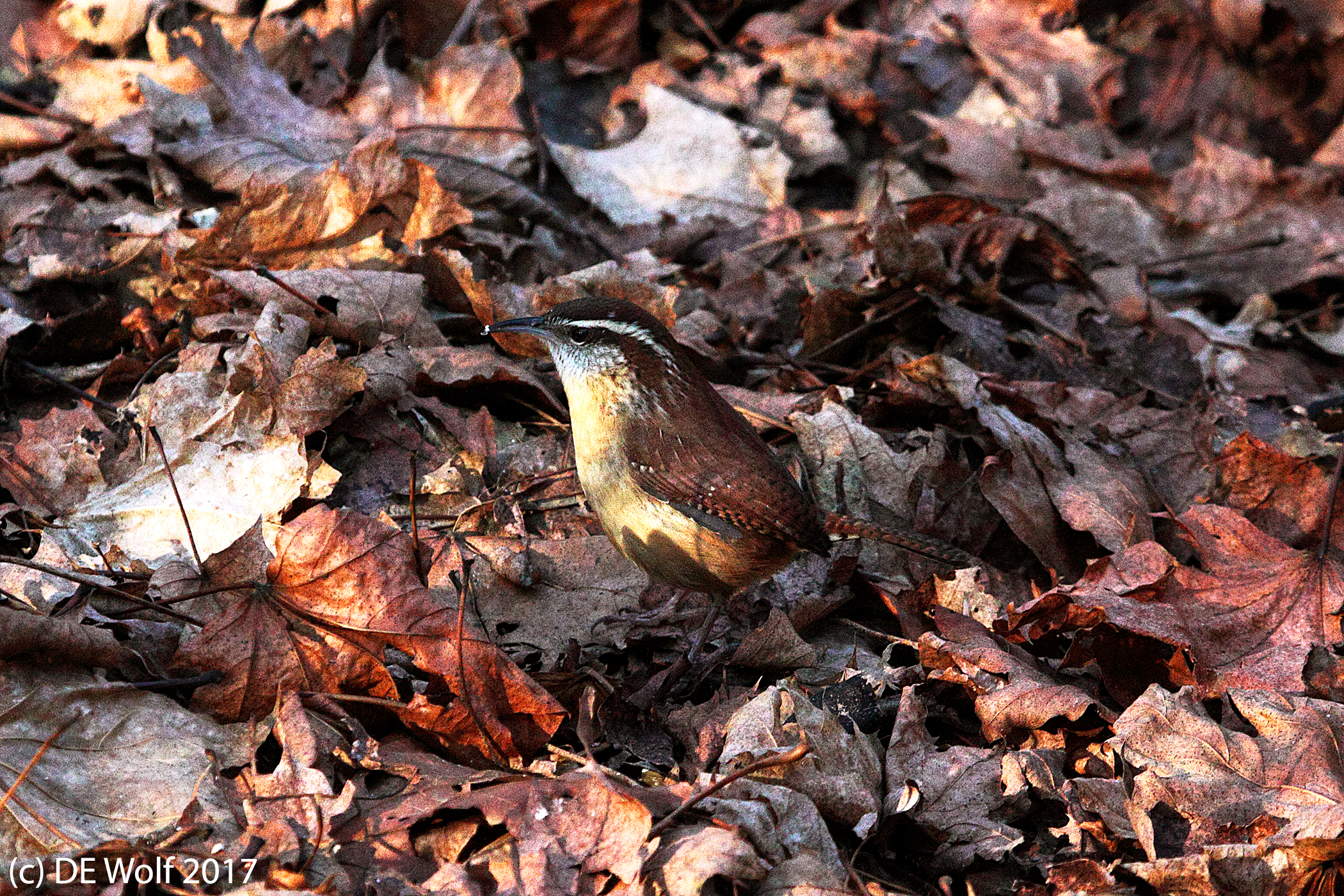
Figure 1 – Carolina wren, Sudbury, MA, January 2017. (c) DE Wolf 2017.
A couple of years ago, I photographed a grouse in Wisconsin and what struck me was how perfect this little bird’s camouflage was. I had the same sensation the other morning when I photographed this little Carolina wren – Thryothorus ludovicianus – against the background of last fall’s leaves. You have to look closely or you might miss it and wrens supplement this by a cautious shyness. They seldom stay long enough to be photographed.
It is reported that the Carolina Wren is vulnerable to cold winters and that northern populations decrease markedly after severe winters. It is, perhaps, the case, at least in the short-term, that the Carolina wren is benefiting from global warming, since over the last century their northward range has expanded since the mid-1900s.
There is a little poem called the “Courtship of Cock Robin and Jenny Wren” that is believed by scholar to have its base in the Norse myth relating the death of Balder, resulting from the intrigues of Loki, the trickster. But it gained new life as an allegory of the 1742 intrigues that brought down the government of, Sir Robert Walpole, referred to as the “Robinocracy.” It has nothing to do with photography, but is delightful just the same. So I reproduce it here.
It was on a merry time,
When Jenny Wren was young,
So neatly as she danced,
And so sweetly as she sung–
Robin Redbreast lost his heart:
He was a gallant bird;
He doffed his hat to Jenny,
And thus to her he said.
“My dearest Jenny Wren,
If you will but be mine,
You shall dine on cherry pie,
And drink nice currant wine.
“I’ll dress you like a Goldfinch,
Or like a Peacock gay;
So if you’ll have me, Jenny,
Let us appoint the day.”
Jenny blushed behind her fan,
And thus declared her mind:
“Then let it be to-morrow, Bob;
I take your offer kind.
“Cherry-pie is very good;
So is currant-wine;
But I will wear my brown gown,
And never dress too fine.”
Robin rose up early,
At the break of day;
He flew to Jenny Wren’s house,
To sing a roundelay.
He met the Cock and Hen,
And bade the Cock declare,
This was his wedding-day
With Jenny Wren the fair.
The Cock then blew his horn,
To let the neighbors know
This was Robin’s wedding-day,
And they might see the show.
And first came Parson Rook,
With his spectacles and band;
And one of Mother Hubbard’s books
He held within his hand.
Then followed him the Lark,
For he could sweetly sing;
And he was to be clerk
At Cock Robin’s wedding.
He sang of Robin’s love
For little Jenny Wren;
And when he came unto the end,
Then he began again.
The Goldfinch came on next,
To give away the bride;
The Linnet, being bridesmaid,
Walked by Jenny’s side.
And as she was a-walking,
Said, “Upon my word,
I think that your Cock Robin
Is a very pretty bird.”
The blackbird and the Thrush,
And charming Nightingale,
Whose sweet “jug” sweetly echoes
Through every grove and dale;
The sparrow and Tomtit,
And many more were there;
All came to see the wedding
Of Jenny Wren so fair.
The Bullfinch walked by Robin,
And thus to him did say:
“Pray mark, friend Robin Redbreast,
That Goldfinch dressed so gay;
“What though her gay apparel
Becomes her very well;
Yet Jenny’s modest dress and look
Must bear away the bell !”
Then came the bride and bridegroom;
Quite plainly was she dressed;
And blushed so much, her cheeks were
As red as Robin’s breast.
But Robin cheered her up;
“My pretty Jen,” said he,
” We’re going to be married,
And happy we shall be.”
“Oh, then,” says Parson Rook,
“Who gives this maid away ?”
“I do,”says the Goldfinch,
“And her fortune I will pay;
“Here’s a bag of grain of many sorts,
And other things beside;
Now happy be the bridegroom,
And happy be the bride !”
“And will you have her, Robin,
To be your wedded wife ?”
“Yes, I will,” says Robin,
And love her all my life.”
“And you will have him, Jenny,
Your husband now to be ?”
“Yes, I will,” says Jenny,
And love him heartily.”
Then on her finger fair
Cock Robin put the ring;
“You’re marrried now,” says Parson Rook;
While the Lark aloud did sing:
“Happy be the bridegroom,
And happy be the bride!
And ,nay not man, nor bird, nor beast
This happy pair divide.”
The birds were asked to dine;
Not Jenny’s friends alone,
But every pretty songster
That had Cock Robin known.
They had ;cherry-pie,
Besides some currant-wine,
And every guest brought something,
That sumptuous they might dine.
Now they all sat or stood,
To eat and to drink;
And every one said what,
He happened to think.
They each took a bumper,
And drank to the pair,
Cock Robin the bridegroom,
And Jenny Wren the fair.
The dinner things removed,
They all began to sing;
And soon they made the place
Near a mile around to ring.
The concert it was fine;
And every bird tried
Who best should sing for Robin,
And Jenny Wren the bride,
When in came the Cuckoo
And made a great rout;
He caught hold of Jenny,
And pulled her about.
Cock Robin was angry,
And so was the Sparrow,
Who fetched in a hurry
His bow and his arrow.
His aim then he took,
But he took it not right;
His skill was not good,
Or he shot in a fright;
For the cuckoo he missed,
But Cock Robin he killed!—
And all the birds mourned
That his blood was so spilled.
Who killed Cock Robin?
“I,” said the Sparrow,
“With my bow and arrow,”
I killed Cock Robin.”
Who saw him die
“I” said the Fly,
“With my little eye,
And I saw him die.”
Who caught his blood?
“I,” said the Fish,
“With my little dish,
And I caught his blood.”
Who made his shroud?
“I,” said the Beetle,
“With my little needle,
And I made his shroud.
Who shall dig his grave ?
“I,” said the Owl,
“With my spade and show’l,
And I’ll dig his grave.”
Who’ll be the parson ?
“I” said the Rook,
“With my little book,
And I’ll be the parson.”
Who’ll be the clerk ?
“I,” said the Lark,
“If it’s not in the dark,
And I’ll be the clerk.”
Who’ll carry him to the grave ?
“I,” said the Kite,
“If tis not in the night,
And I’ll carry him to his grave.”
Who’ll be the chief mourner ?
“I,” said the Dove,
“I mourn for my love,
And I’ll be chief mourner.”
Who’ll carry the link ?
“I,” said the Linniet,
“I’ll fetch it in a minute,
And I’ll carry the link.”
Who’ll sing a psalm ?
“I,” said the Thrush,
As she sat in a bush,
“And I’ll sing a psalm.”
And who’ll toll the bell ?
“I,” said the Bull,
“Because I can’ pull ;”
And so, Cock Robin, farewell.
Canon T2i with EF100-400mm f/4.5-5.6L IS USM lens at 260 mm, ISO 1600, Aperture Priority AE Mode, 1/640 th sec at f/7.1 with -1 exposure compensation.

